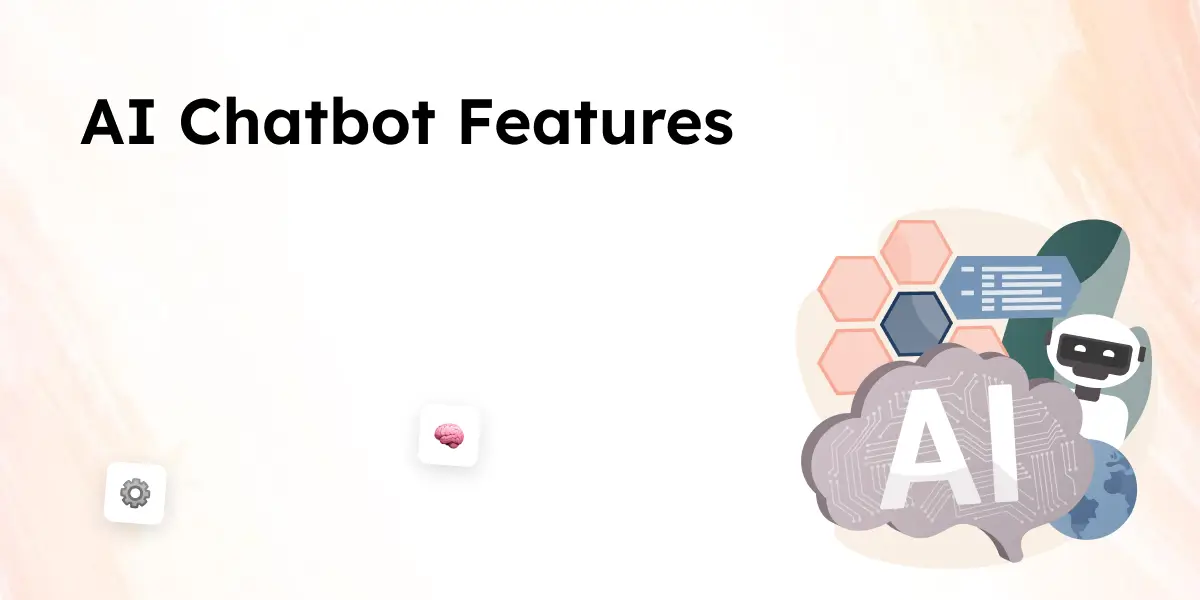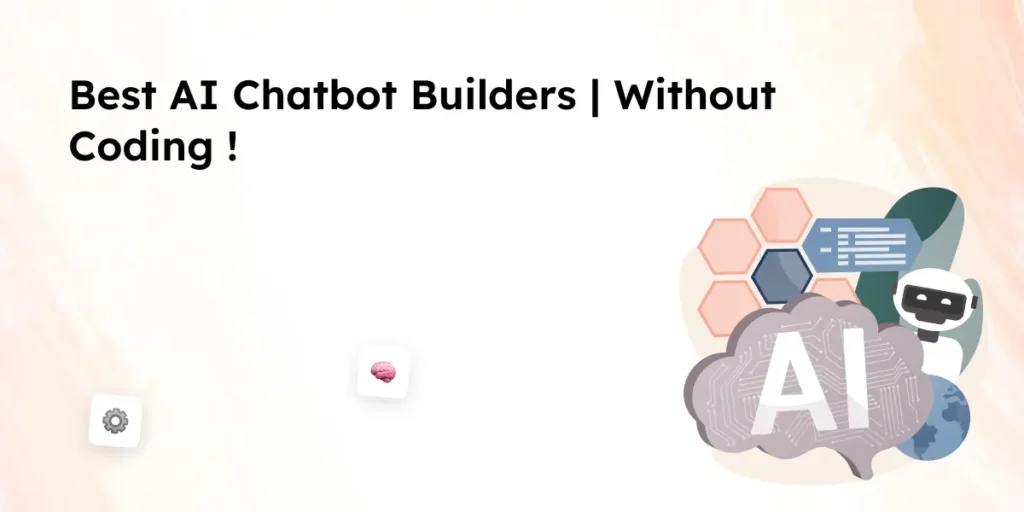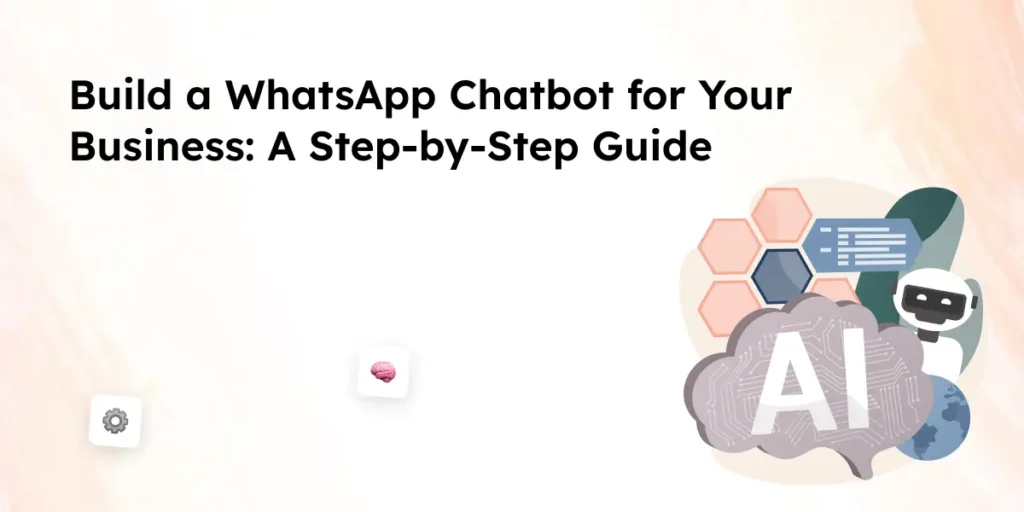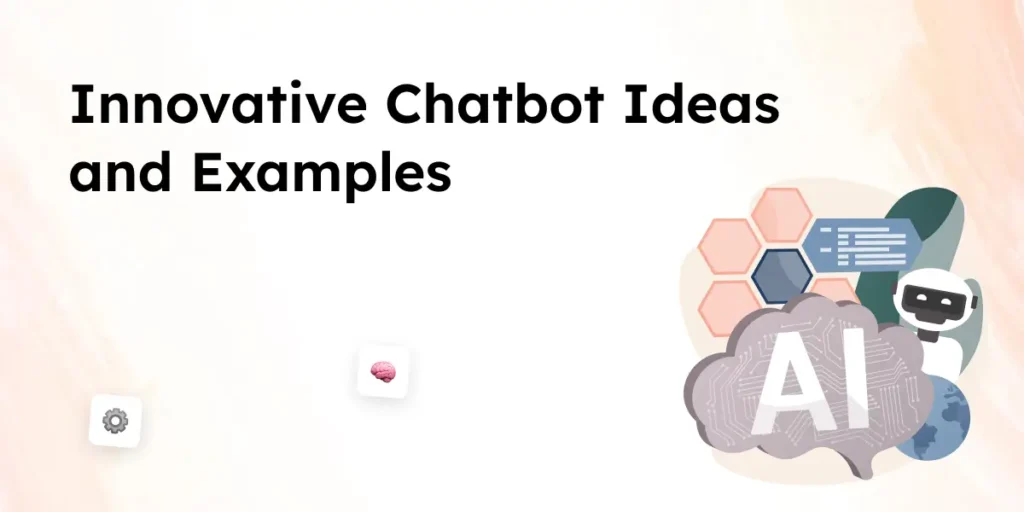AI chatbots help businesses manage customer interactions efficiently across various chat channels. Unlike rule-based chatbots, AI-powered chatbots use machine learning and natural language understanding to improve responses over time. They automate customer support, reduce response time, and enhance the customer experience by handling inquiries, providing personalized recommendations, and integrating with messaging platforms.
This guide will cover the key chatbot features to consider when choosing one for your business. It will also explore chatbot use cases, types of chatbots, and real-world examples of how businesses benefit from chatbot technology. By the end, you’ll understand how chatbots can be integrated into your business strategy and why choosing the right chatbot is crucial for handling customer issues effectively.
How Do AI Chatbots Work?
AI chatbots process user queries and generate responses using artificial intelligence technologies. Unlike traditional bots that follow a strict set of predefined rules, AI-powered chatbots use natural language processing and deep learning to understand customer intent and respond contextually.
Key Aspects of AI Chatbots:
- Understanding User Input: AI chatbots use natural language understanding to analyze queries and determine intent.
- Generating Responses: They rely on machine learning algorithms and large language models to provide contextually relevant answers.
- Integration with Systems: Chatbots can be integrated into messaging platforms, mobile apps, and live chat systems to provide seamless support.
- Learning Over Time: AI-powered chatbots improve with every conversation by using machine learning to continuously refine responses.
- Handling Simple and Complex Queries:
- Basic customer service bots answer frequently asked questions and automate routine tasks.
- Advanced AI chatbots assist with complex issues using generative AI and conversational AI techniques.
The complexity of the chatbot depends on its AI capabilities. While some bots handle only FAQs, others offer personalized recommendations and real-time assistance. Conversational chatbots combine AI-powered features with human conversation, allowing businesses to automate responses while seamlessly handing over to human agents when needed.
By leveraging AI chatbot tools, businesses can streamline customer support, resolve customer issues faster, and offer personalized product recommendations based on user behavior. Understanding chatbot types and their functionality helps businesses choose the right chatbot solution for their needs.
10 Must-Have AI Chatbot Features [+Examples]
A chatbot for your business should include key features that enhance automation, improve customer interactions, and provide a seamless experience across multiple chat channels. Here are ten essential AI chatbot features to consider, along with real-world examples.
1. Natural Language Processing (NLP)
- Allows chatbots to interpret user queries and generate human-like responses.
- Enhances chatbot conversation by understanding context and sentiment.
- Example: Amazon’s chatbot uses NLP to assist with order tracking and customer inquiries.
2. Seamless Integration with CRM and Live Chat Software
- Chatbots can be integrated with CRM platforms, messaging tools, and helpdesk software.
- Ensures smooth transitions between automated support and human agents.
- Example: HubSpot’s chatbot builder connects with its CRM to manage customer inquiries efficiently.
3. Omnichannel Messaging Support
- AI chatbots work across multiple platforms, including websites, mobile apps, and social media.
- Provides a consistent customer experience regardless of the chat channel.
- Example: Haptik’s chatbot on WhatsApp allows businesses to automate conversations at scale.
4. Customization and Personalization
- Uses AI technologies to provide personalized product recommendations based on user behavior.
- Chatbot provides tailored responses by learning from past interactions.
- Example: Starbucks’ chatbot enables customers to customize and order their favorite drinks.
5. AI-Powered Analytics and Reporting
- Collects customer data and analyzes trends in chatbot interactions.
- Helps businesses optimize chatbot features and improve customer experience.
- Example: Yellow.ai’s AI chatbot tool provides insights to enhance chatbot performance.
6. Multilingual Capabilities
- Supports multiple languages to handle diverse customer inquiries.
- Expands customer reach and ensures accessibility.
- Example: Foyer’s chatbot solution handles inquiries in over 100 languages.
7. Sentiment Analysis for Customer Satisfaction
- Uses natural language understanding to detect customer emotions.
- Adapts responses contextually to improve engagement.
- Example: AI-powered chatbots in customer support identify frustrated users and escalate complex issues to human agents.
8. Handover to Human Agents via Live Chat
- AI chatbots handle basic customer inquiries but transfer complex issues to live agents.
- Ensures a smooth transition between AI-powered chatbots and human conversation.
- Example: Proximus’ chatbot directs advanced customer issues to support representatives.
9. Conversational AI and Context Awareness
- Uses artificial intelligence to maintain chatbot conversation flow across interactions.
- Improves chatbot technology by remembering past messages and inquiries.
- Example: Google’s AI chatbot remembers user preferences and context for future conversations.
10. Self-Learning and Adaptive AI Chatbots
- Uses machine learning algorithms to improve responses over time.
- Offers an AI chatbot tool that learns from customer interactions.
- Example: Generative AI chatbots adapt to changing customer needs based on user input.
These AI chatbot features can help businesses automate processes, enhance customer support, and provide a more engaging chatbot experience. Choosing the best AI chatbot depends on business needs, chatbot types, and integration capabilities.
Chatbot Use Cases: Where AI Chatbots Help the Most
AI chatbots are widely used across industries to improve customer experience, automate tasks, and streamline business operations. Businesses leverage chatbot technology for various purposes, from answering customer inquiries to providing personalized recommendations. Here are some of the most effective chatbot use cases.
1. Customer Support and Helpdesk Automation
- AI-powered chatbots help businesses reduce response time by handling basic customer inquiries.
- Chatbots can be integrated with live chat systems to escalate complex issues to human agents.
- Example: A chatbot for your business can answer frequently asked questions, troubleshoot common problems, and provide real-time assistance.
2. E-Commerce and Product Recommendations
- Chatbots offer personalized product recommendations based on user behavior and preferences.
- AI chatbot features like generative AI and deep learning help analyze customer interactions to suggest new products or services.
- Example: Online retailers use chatbots to provide personalized shopping experiences and assist with checkout processes.
3. Lead Generation and Sales Support
- Chatbots work as AI assistants, capturing leads and qualifying prospects before handing them to sales teams.
- AI-powered chatbots guide users through inquiries and product discovery based on user input.
- Example: A chatbot can interpret customer needs and suggest the right chatbot solution to potential buyers.
4. Healthcare and Appointment Scheduling
- AI chatbots help patients schedule appointments and answer medical-related FAQs.
- Conversational AI chatbots use machine learning to continuously improve responses to patient queries.
- Example: Healthcare providers use chatbot software to provide virtual assistants for medical guidance.
5. Banking and Financial Assistance
- AI chatbots in finance assist with balance inquiries, transaction history, and fraud detection.
- Chatbots offer secure messaging solutions for financial services.
- Example: Banks use AI bot technology to automate routine customer interactions and provide instant support.
6. Human Resources and Employee Assistance
- AI chatbots provide HR support by answering employee queries about company policies, benefits, and onboarding processes.
- Enterprise chatbots require robust features like multilingual support and AI-powered responses. Learn more in our Enterprise Chatbots guide.
- Chatbots can also assist with training programs and performance tracking.
- Example: Enterprises deploy AI chatbot tools to automate employee assistance and reduce administrative workload.
7. Travel and Hospitality Assistance
- Chatbots help customers with bookings, travel inquiries, and itinerary management.
- AI chatbot features like natural language understanding improve interactions in multiple languages.
- Example: Airlines and hotels use chatbot solutions to handle reservation inquiries and provide travel updates.
8. Educational Support and Virtual Learning
- Chatbots increasingly assist students with coursework, scheduling, and FAQs about academic programs.
- AI-powered chatbots provide learning assistance based on the user’s past interactions.
- Example: Universities and e-learning platforms use AI chatbot tools to offer real-time support for students.
9. IT Support and Troubleshooting
- Chatbots can be integrated into IT systems to automate ticket creation and provide self-service troubleshooting.
- AI-powered chatbots answer user queries related to software, networks, and cybersecurity.
- Example: Tech companies use chatbots to reduce the workload of IT support teams and resolve customer issues efficiently.
AI chatbots help businesses across multiple industries automate processes, improve customer engagement, and provide personalized experiences. By choosing the right chatbot for your business, companies can enhance efficiency and deliver better support.
Types of Chatbots: Choosing the Best AI Chatbot for Your Business
There are different types of chatbots available, each designed for specific use cases. Understanding chatbot types helps businesses select the best AI chatbot for their needs. Below are the most common chatbot types and their applications.
1. Rule-Based Chatbots
- Follow a set of predefined rules to answer customer inquiries.
- Cannot understand complex queries beyond programmed responses.
- Best for: Answering frequently asked questions and handling structured conversations.
- Example: FAQ chatbots used by e-commerce sites for order tracking and refund policies.
2. AI-Powered Chatbots
- Use artificial intelligence and machine learning to understand customer interactions.
- Can process user queries, learn from past conversations, and improve over time.
- Best for: Businesses looking for a chatbot solution that evolves with customer needs.
- Example: AI chatbot tools used in customer support to resolve complex issues.
3. Conversational Chatbots
- Offer a human-like chatbot conversation experience using natural language processing.
- Understand customer intent and provide contextually relevant responses.
- Best for: Businesses that require chatbots to provide personalized customer support.
- Example: AI-powered chatbot assistants used in banking and healthcare.
4. Hybrid Chatbots
- Combine rule-based and AI chatbot features to provide a balanced chatbot solution.
- Handle both simple customer inquiries with predefined responses and complex queries using AI.
- Best for: Businesses that need automation but also require human conversation options.
- Example: AI chatbot software in telecom that transfers complex inquiries to human agents.
5. Generative AI Chatbots
- Use generative AI and large language models to create human-like responses.
- Can generate responses dynamically rather than relying on pre-written scripts.
- Best for: Businesses that require advanced AI chatbots capable of handling varied and unpredictable customer interactions.
- Example: AI-powered chatbot solutions used in customer experience platforms to provide adaptive responses.
6. AI Assistants and Virtual Assistants
- Provide broader assistance beyond text-based chatbot conversations.
- Can interact through voice commands and offer advanced AI-powered functionalities.
- Best for: Businesses needing chatbots that integrate with voice technology.
- Example: AI assistants like Siri, Alexa, and Google Assistant.
7. Chatbots for Messaging Platforms
- Designed to operate within messaging apps like WhatsApp, Facebook Messenger, and Slack.
- Enable businesses to automate responses and customer support on social media.
- Best for: Brands using social media chatbots to engage customers in real-time.
- Example: AI chatbots used by retail brands for product recommendations and order support.
By understanding these chatbot types, businesses can choose the right chatbot based on user needs and customer interactions. A chatbot can interpret inquiries, automate responses, and enhance customer experience when integrated with AI capabilities.
FAQs About AI Chatbot Features
1. What is the best AI chatbot for business?
The best AI chatbot depends on business needs. If your company requires automation for simple queries, rule-based chatbots may be enough. However, AI-powered chatbots with natural language processing and machine learning provide better responses and improve customer experience over time. Hybrid chatbots offer a mix of both for businesses needing structured automation with AI capabilities.
2. How do AI chatbots improve customer support?
AI chatbots help by handling customer inquiries quickly and reducing response times. They automate answers to frequently asked questions, provide personalized recommendations, and escalate complex issues to human agents when needed. This allows businesses to manage high volumes of inquiries without overwhelming their support teams.
3. What are the essential chatbot features for a business?
Some key chatbot features to consider include:
Natural language understanding for better conversations.
Seamless integration with CRM and live chat systems.
Omnichannel support for various messaging platforms.
AI-powered analytics to track performance.
Sentiment analysis to improve customer interactions.
Conclusion
AI chatbots help businesses automate interactions, improve customer support, and enhance user experience. With AI capabilities like natural language processing and machine learning, they provide personalized responses, streamline operations, and reduce costs.
Choosing the right chatbot depends on industry needs, whether it’s a generative AI chatbot for adaptive conversations or a hybrid chatbot for balanced automation. Implementing AI chatbots can boost engagement, efficiency, and overall customer satisfaction, making them a valuable tool for modern businesses.



